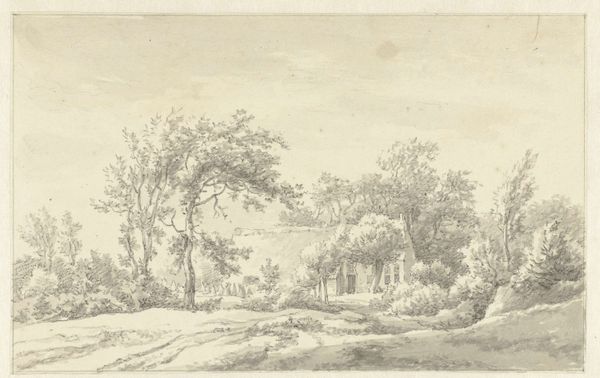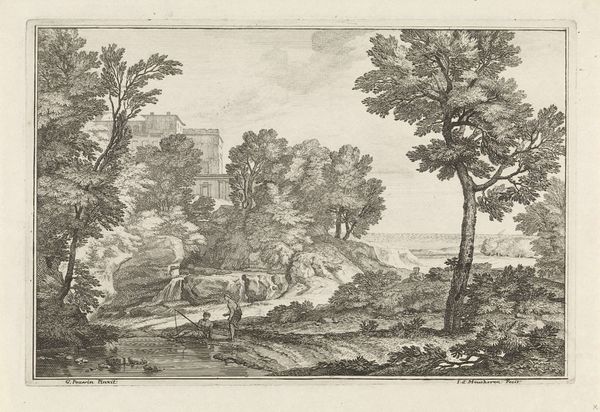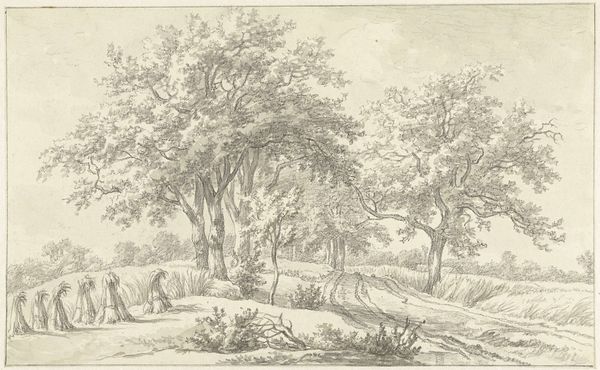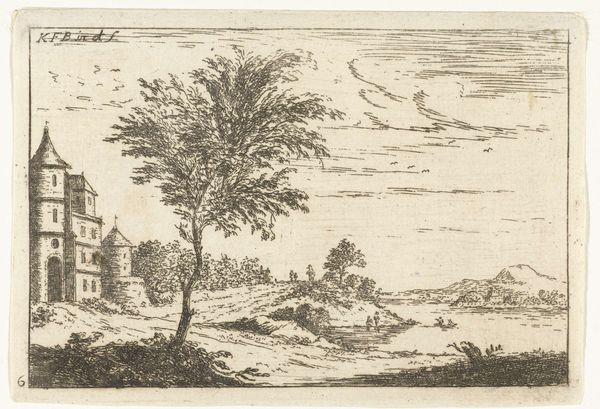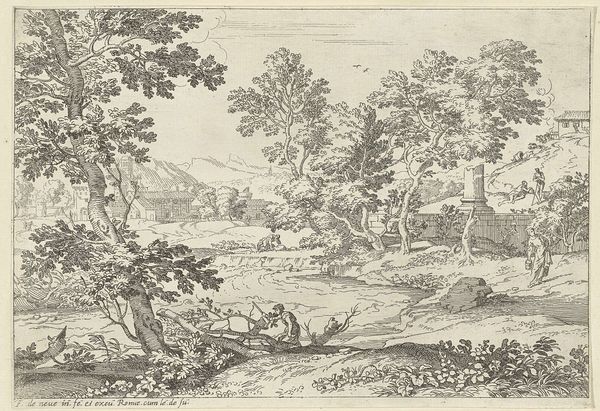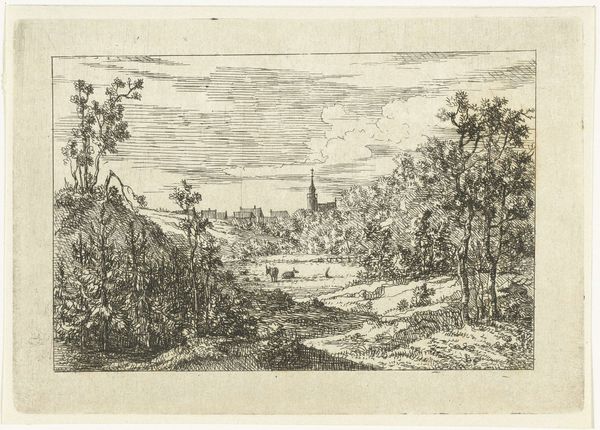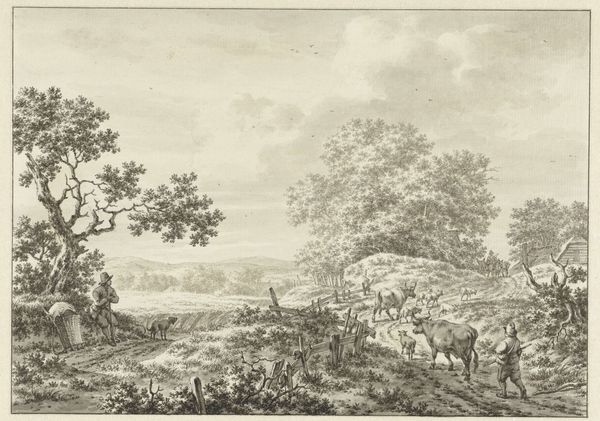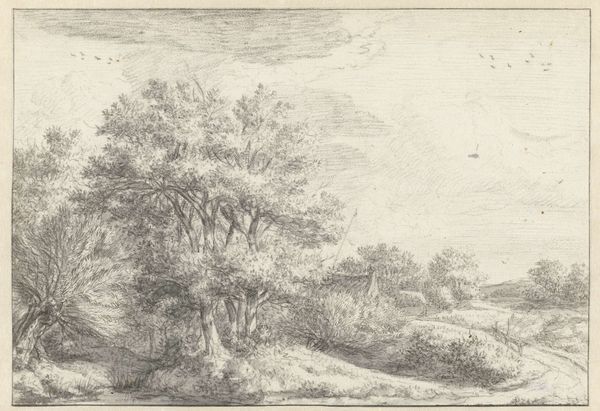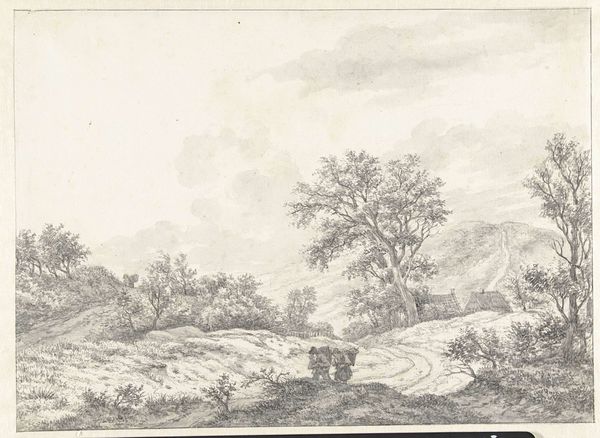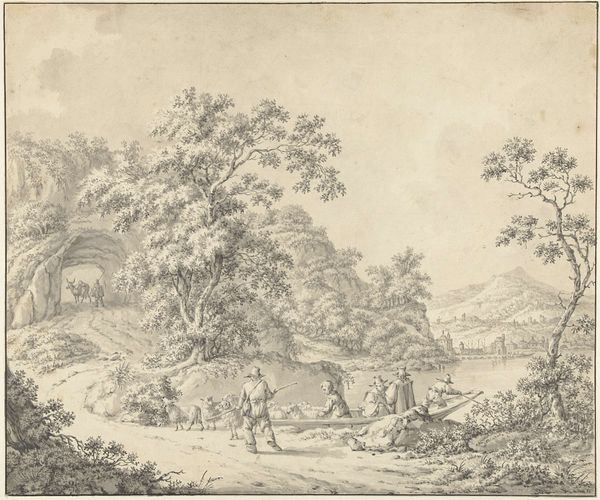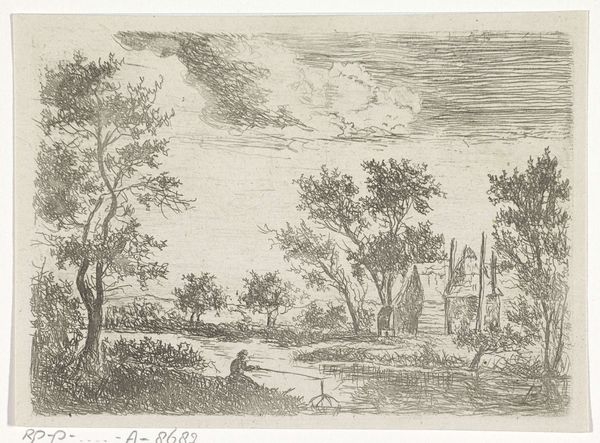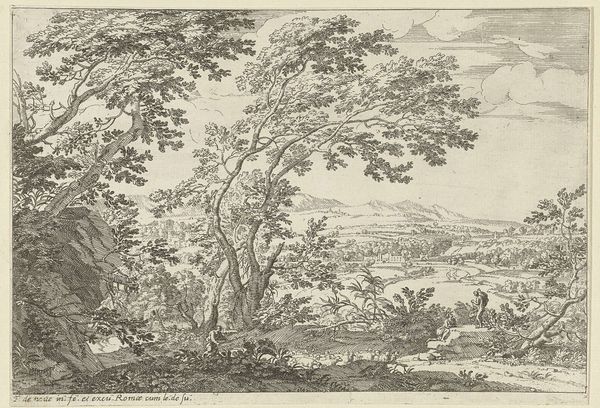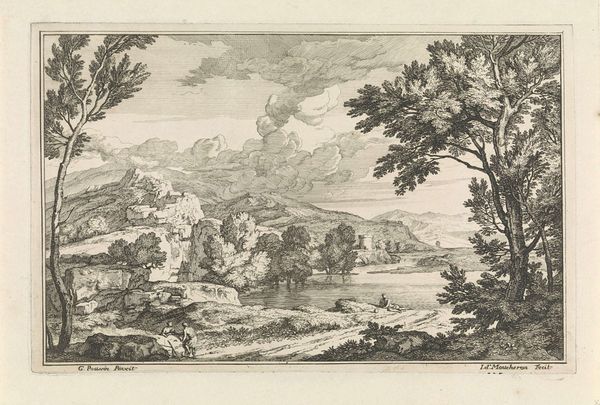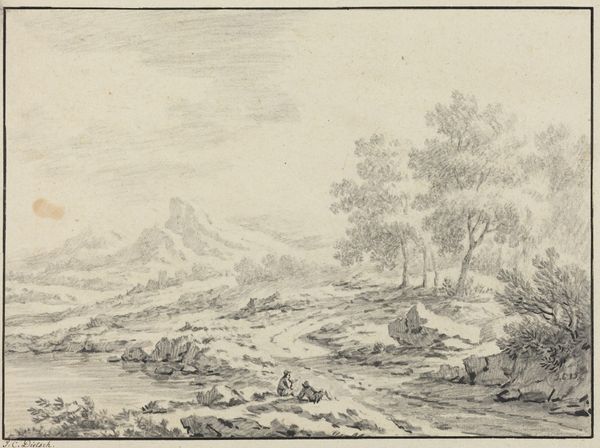
drawing, paper, pencil
#
drawing
#
landscape
#
paper
#
pencil
#
northern-renaissance
#
watercolor
Dimensions: height 196 mm, width 269 mm
Copyright: Rijks Museum: Open Domain
Editor: Here we have Herman Naiwincx’s “Bebost rivierlandschap met twee hengelaars,” dating from around 1634 to 1654. It's a pencil and watercolor drawing on paper, and it strikes me as very serene, almost melancholic in its muted tones. What do you see in the composition of this piece? Curator: The drawing showcases a carefully structured composition. Note how the strong verticality of the tree on the left is echoed, though diminished, by the suggestion of the distant spire on the right horizon. It frames the tranquil scene, almost like theatrical curtains. The use of diagonal lines created by the river directs the viewer's eye into the depth of the picture plane, which suggests a much wider space than is truly there. Have you also noted the interplay between light and shadow to create texture, particularly on the large tree? Editor: Yes, the tree's texture is incredible, and that contrast really brings it forward. The fishermen feel much smaller as a result. What do you make of their inclusion in the landscape? Curator: Their inclusion is not arbitrary; these figures play an integral role. By their scale and positioning they serve to reinforce the grandeur and sublimity of nature. They’re strategically placed at the intersection of planes within the landscape to draw focus to spatial construction within the frame, and therefore heighten the artificiality of the work as constructed – perhaps more symbolic than observational. The soft variations in tone also contribute significantly to the overall balance and harmony of the drawing. Notice the restricted palette that enhances that feeling. Editor: That's fascinating. I was focusing on the seeming naturalism, but you’ve helped me appreciate how deliberate and constructed it all is. Curator: Precisely. Naiwincx isn’t just recording nature, but creating an effect. It encourages us to delve beneath superficial appearances and engage with the fundamental construction and careful visual dynamics that the work employs. Editor: Thank you, I'm going to spend more time examining tonal balance and structure in similar works.
Comments
No comments
Be the first to comment and join the conversation on the ultimate creative platform.
